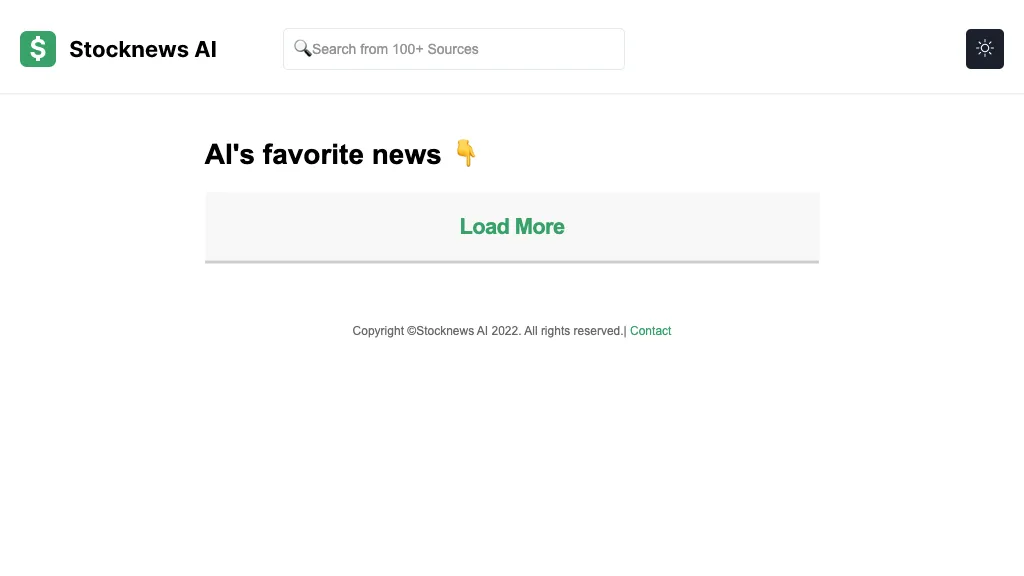Examining the AI and machine learning (ML) models employed by stock prediction and trading platforms is vital in order to ensure that they are precise, reliable, and useful insights. A poorly designed or overhyped model can result in financial losses and flawed forecasts. Here are the 10 best strategies for evaluating AI/ML models that are available on these platforms.
1. Understand the Model's Purpose and approach
The goal must be determined. Find out if the model has been developed to be used for long-term investment or short-term trading.
Algorithm disclosure: Check whether the platform has disclosed which algorithms it uses (e.g. neural networks and reinforcement learning).
Customization - See whether you can modify the model to suit your strategy for trading and your risk tolerance.
2. Examine the performance of models using measures
Accuracy Check the accuracy of the model's prediction. Do not rely solely on this measure, but it could be inaccurate.
Precision and recall. Examine whether the model can accurately predict price changes and reduces false positives.
Risk-adjusted gain: See if the predictions of the model result in profitable transactions, after taking into account risk.
3. Check the model by Backtesting it
Performance historical: Test the model with historical data to determine how it will perform in previous market conditions.
Tests using data that was not previously intended for training To avoid overfitting, test your model using data that was never previously used.
Scenario-based analysis: This entails testing the accuracy of the model under different market conditions.
4. Make sure you check for overfitting
Overfitting signs: Look out for models that perform extremely good on training data but poorly on unseen data.
Regularization techniques: Verify the application uses techniques such as L1/L2 regularization or dropout to prevent overfitting.
Cross-validation (cross-validation): Make sure your platform uses cross-validation for assessing the model's generalizability.
5. Review Feature Engineering
Look for features that are relevant.
Selecting features: Ensure that the system selects features that are statistically significant and avoid redundant or irrelevant data.
Updates to dynamic features: Verify that your model is updated to reflect new characteristics and current market conditions.
6. Evaluate Model Explainability
Interpretability: Ensure that the model has clear explanations of its predictions (e.g. SHAP values, importance of features).
Black-box model Beware of platforms that make use of models that are overly complicated (e.g. deep neural network) without describing the tools.
User-friendly insights: Find out if the platform provides actionable insights in a form that traders can comprehend and apply.
7. Examine the ability to adapt your model
Changes in the market - Make sure that the model is modified to reflect changes in market conditions.
Verify that your platform is updating the model regularly with the latest information. This will increase the performance.
Feedback loops: Ensure that your platform incorporates feedback from users or real-world results to refine the model.
8. Be sure to look for Bias or Fairness
Data bias: Check that the data in the training program is accurate and does not show bias (e.g. an bias towards certain sectors or times of time).
Model bias: Make sure that the platform is actively monitoring biases in models and reduces them.
Fairness - Make sure that the model is not biased towards or against particular sectors or stocks.
9. Evaluate the effectiveness of Computational
Speed: Determine if the model generates predictions in real time, or with minimal delay. This is crucial for high-frequency traders.
Scalability: Check whether a platform is able to handle multiple users and large databases without affecting performance.
Resource usage : Determine if the model is optimized to use computational resources effectively (e.g. GPU/TPU).
Review Transparency Accountability
Model documentation: Make sure the platform has detailed documentation on the model's structure and the process of training.
Third-party audits : Confirm that your model has been audited and validated independently by third-party auditors.
Error Handling: Check if the platform has mechanisms to detect and correct any errors in models or failures.
Bonus Tips:
User reviews and case studies: Study user feedback to get a better understanding of how the model performs in real world situations.
Free trial period: Try the model's accuracy and predictability by using a demo or a free trial.
Customer Support: Verify that the platform offers an extensive technical support or model-related assistance.
These tips will help you evaluate the AI and machine-learning models employed by platforms for stock prediction to make sure they are transparent, reliable and in line with your trading goals. Read the top https://www.inciteai.com/ for site info including ai stock trading bot free, best ai trading software, best ai trading app, ai stock, chart ai trading assistant, ai investing, best ai stock, ai stock, best ai for trading, ai stock trading and more.

Top 10 Tips On Assessing The Regulatory Compliance Of Ai Stock-Predicting/Analyzing Trading Platforms
The regulatory compliance aspect plays an important role in evaluating AI platforms for stock prediction and analysis. Compliance is crucial as it guarantees that the platform adheres to the laws and regulations. It also safeguards users' personal information. These are the top 10 tips for assessing regulatory compliance.
1. Verify the licensing and registration
Regulators: Make sure your platform is registered with and regulated by the appropriate financial regulatory authorities (e.g., SEC in the U.S., FCA in the UK, ASIC in Australia).
Make sure that the brokers integrated into the platform are licensed and monitored.
Public records: Go to the official website of the regulator for the status of registration for the platform as well as any previous violations.
2. Assessment of the data privacy Compliance
GDPR - If your site operates in the EU or serves users from the EU make sure it complies with GDPR.
CCPA - California Consumer Privacy Act: Verify compliance of California users.
Data handling Policies: Read the policy of the platform's privacy of data to ensure that it clarifies exactly the way that user data is stored, shared and collected.
3. Evaluation of Anti-Money Laundering measures
AML policies: Make sure the platform is able to abide by AML policies that are in place to prevent and detect cash laundering.
KYC Procedures: Verify whether the platform has procedures in place to confirm the identities of its users.
Transaction monitoring: Check if the platform monitors transactions for suspicious activity, and then reports it to authorities in charge.
4. Make sure you are in compliance with Trading Regulations
Market manipulation: Make sure that the platform contains measures to avoid market manipulation like washing trading, spoofing.
Order types: Check that the platform adheres to rules regarding order types.
Best execution: Make sure to see if the platform follows the best execution practices which guarantees that trades are executed at the cheapest price.
5. Assess the level of Cybersecurity Compliance
Data encryption: Verify that the platform safeguards the user's data while it is during its travel and also when it is at rest using encryption.
Incident response: Verify if the platform has a clearly defined incident response strategy for cyberattacks or data breaches.
Certifications: Check if the platform has been certified for cybersecurity (e.g. ISO 27001, SOC 2)
6. Transparency Evaluation and Transparency Evaluation and
Fee disclosure: Ensure the platform clearly discloses all fees, including any hidden or additional charges.
Risk disclosure: Check if there are clear and explicit disclosures about risk, particularly for leveraged or high-risk trading strategies.
Performance reporting: Ensure that the platform provides transparent and accurate reports on its AI models.
7. Verify that you are in compliance with International Regulations
Trading across borders. If you are planning to conduct international trade, make sure that your platform complies with the regulations in force.
Tax reporting: Find out whether the platform offers tools or reports that can help users comply with tax laws (e.g., FIFO rules in the U.S.).
Conformity with international sanctions: Make sure the platform adheres strictly to these rules and does not allow transactions between countries or entities that are banned.
8. Examine Record-Keeping and Audit Trails
Records of transactions: The platform needs to keep detailed records of every transaction that is used for regulatory and auditor purposes.
Logs of user activity - Check that the platform logs all user activities, including logins to the platform, trades executed and any modifications to account settings.
Audit readiness: Ensure the platform has all of the logs and documentation required for a regulatory review.
9. Verify the compliance of AI Specific Regulations
Algorithmic trading rules: If your platform supports algorithmic trading, make sure it complies with regulations like MiFID II in Europe or Reg SCI in the U.S.
Fairness and impartiality: Verify the accuracy of the platform's AI models are monitored and adjusted to prevent bias.
Explainability. Some regulations may require that the platform explain AI-driven prediction and decisions.
10. Review User Comments and Historical Regulatory The History
Reviewer feedback: Go through the feedback of users and then compare it with the platform's the regulations.
History of regulatory violations - Check to determine if the website is known for any past regulatory violations or fines.
Third-party checks: Ensure the compliance of the platform with regulations by checking whether it is subject to periodic audits from third party.
Bonus Tips:
Legal consultation: Talk to a legal expert about the platform's conformity to relevant laws.
Trial period. You can use the trial or demo of the platform to test the compliance features of the platform.
Support for customers: Make sure the platform provides assistance for compliance-related questions or problems.
With these suggestions to evaluate the regulatory compliance of AI stock predicting/analyzing trading platforms, ensuring you choose one that adheres to legal guidelines and protects your interests. Compliance does more than lower legal risks, but can also increase confidence in the platform. Have a look at the top best ai penny stocks examples for website info including ai in stock market, ai stock investing, stock trading ai, ai software stocks, best ai trading platform, free ai tool for stock market india, investing with ai, trading ai tool, ai stock analysis, best ai stocks and more.
